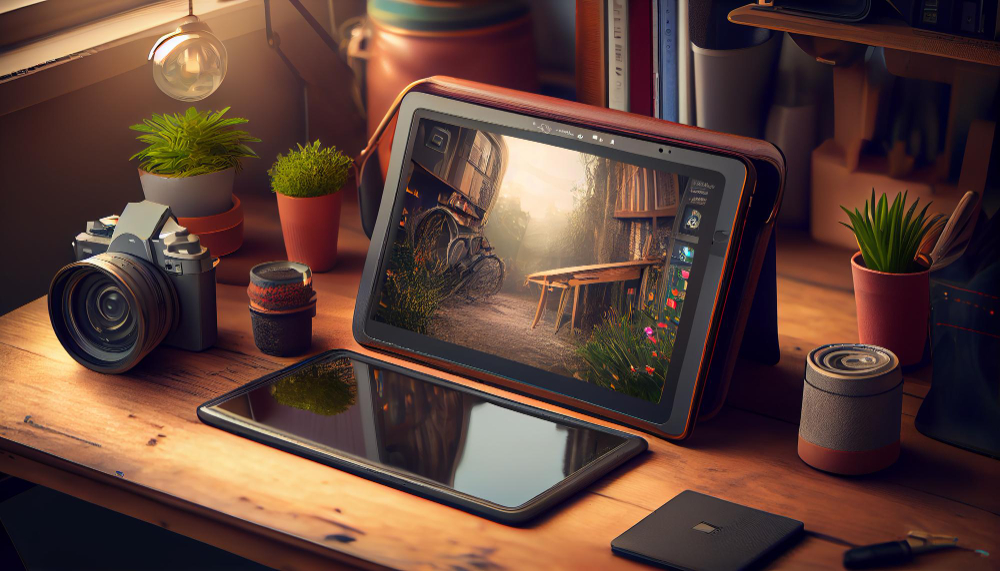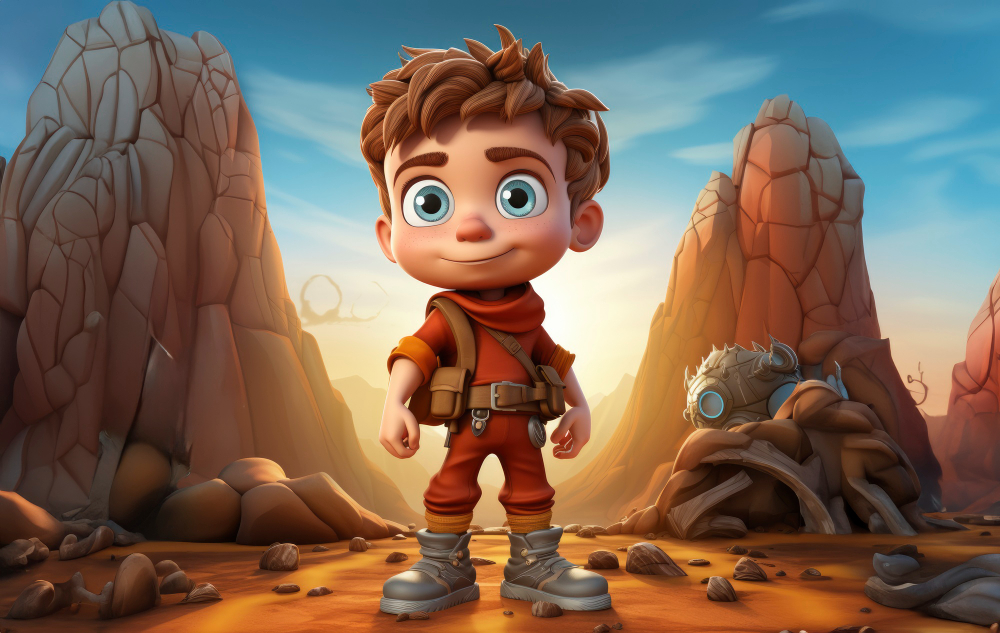Introduction
Struggling with complex software to turn your 2D images into 3D models? Fear not! With the advancements in AI, it’s now as easy as a few clicks. What once required complex software and expertise can now be accomplished with just a few clicks, making it easier than ever for users to bring their creative visions to life. In this piece, we’ll explore the process on how to turn a 2D image into a 3D model, highlighting the simplicity and versatility of modern software tools.
Understanding the Basics of 2D image into 3D model
Before diving into the topic let’s briefly cover some fundamental concepts. A 2D image serves as a flat portrayal of an object or scene, commonly stored in formats like JPG or PNG. In contrast, a 3D model represents an object in three dimensions, encompassing depth and volume to simulate real-world attributes.
To bridge the disparity between these two formats, we leverage AI tools designed specifically for converting 2D images into 3D models. These tools utilize advanced algorithms to interpret the visual information present in 2D images and reconstruct them into detailed 3D representations. By harnessing the power of artificial intelligence, we can seamlessly transition between these disparate formats, unlocking new avenues for creativity and innovation.
Defining the Terms (2D image, 3D model, SVG file)
In digital imaging and design, understanding key terms is crucial for navigating the creative process effectively. Let’s break down some fundamental concepts:
2D Image: A 2D image represents objects or scenes in two dimensions, typically width and height, without depth. These images are captured or created digitally and are commonly used in various media, from digital art to photography. Formats such as JPG and PNG are ubiquitous in storing 2D images due to their widespread compatibility and compression capabilities.
3D Model: On the other hand, a 3D model is a digital representation of an object or environment in three dimensions, adding depth and volume to the visual representation. Unlike 2D images, 3D models provide a more immersive and realistic viewing experience, making them indispensable in industries like gaming, animation, architecture, and product design.
SVG File: SVG, or Scalable Vector Graphics, is a file format based on XML (Extensible Markup Language) commonly used for vector images. Unlike raster images, which are pixel-based and can lose quality when scaled, SVG files describe images using mathematical equations, ensuring crispness and clarity at any size. This scalability makes SVG files ideal for logos, icons, and illustrations, where maintaining quality across different devices and resolutions is paramount.
In the realm of compatibility, modern design tools prioritize seamless integration with various file formats, including JPG, PNG, and SVG. This broad compatibility ensures that artists and designers can work with their preferred file types without encountering compatibility issues, fostering smooth workflows and efficient conversion processes.
By getting a hold of these terms, we can understand the intricacy of digital imaging with confidence, leveraging the power of 2D images, 3D models, and SVG files to bring their creative visions to life across diverse media and platforms.

Step-by-Step Guide to turn a 2D image into 3D model
1. Importing the 2D Images:
Start your journey by selecting the 2D image you desire to transform into a 3D model. The process kicks off with most software tools offering a user-friendly interface to import images seamlessly in various formats, including widely used ones such as JPG, PNG, and SVG files. This step sets the foundation for the transformation process, ensuring that your chosen image is ready to undergo the conversion journey.
2. Selecting the Conversion Method:
Once your image is imported, the next crucial step involves choosing the conversion method that best suits your needs. Depending on the capabilities of the tool you’re using, you may be presented with options such as automatic or manual tracing. Automatic tracing offers convenience and speed, while manual tracing provides greater control and precision over the conversion process. Select the method that aligns with your preferences and project requirements.
3. Adjusting Settings:
Fine-tuning the conversion settings is where the magic happens. This step allows you to customize various aspects of the transformation to achieve your desired results. Whether it’s adjusting the thickness of the model, enhancing specific attributes, or adding text elements for additional context, tweaking these settings ensures that your 3D model reflects your creative vision accurately.
4. Initiating the Conversion Process:
With your settings dialed in, it’s time to initiate the conversion process with a simple click. Watch as the AI tool works its magic, seamlessly translating your 2D image into a fully realized 3D model. Depending on the complexity of the image and the chosen settings, the transformation may take mere seconds or a few minutes. Sit back and marvel as your creation comes to life before your eyes.
5. Editing and Refining the 3D Model:
Once the conversion is complete, the journey doesn’t end there. Take the opportunity to further refine and polish your 3D model to perfection. Whether it involves tweaking dimensions, smoothing surfaces, or adding intricate details, this step allows you to fine-tune the nuances of your creation until it meets your exact specifications.
6. Save and Download the Converted File:
Finally, once you’re satisfied with the results, it’s time to save and download your newly created 3D model. Most tools offer default saving options for convenience, but don’t hesitate to explore customizable file settings to tailor the output to your specific needs. With just a few clicks, your masterpiece is ready to be shared, showcased, or integrated into your projects.
Achieving remarkable results with just a few clicks has never been easier. Streamline your workflow, save valuable time with default settings, and unleash your creativity with lightning-fast downloads. Dive deeper into the realm of possibilities by exploring advanced features for further customization, empowering you to push the boundaries of what’s possible with 3D modeling.
Benefits and Features of Transforming a 2D image into 3D model
The beauty of transforming 2D images into intricate 3D models lies in its simplicity and speed, offering a seamless experience for users of all skill levels. Whether you’re a beginner or a seasoned artist, the intuitive nature of these tools streamlines the conversion process, eliminating complexity and making creativity accessible with just a click. This democratization of 3D modeling empowers individuals to explore their artistic visions without being hindered by technical barriers, fostering a culture of innovation and exploration in the digital realm.
Moreover, the versatility of 3D models transcends mere visualization, unlocking a myriad of real-world applications across various industries. From rapid prototyping in product design to crafting immersive digital environments in gaming and virtual reality, the transition from 2D to 3D injects a sense of magic into the creative process, elevating projects to new heights of realism and interactivity.
The ability to seamlessly bridge the gap between 2D and 3D opens doors to endless opportunities for innovation and creativity. Whether it’s bringing architectural concepts to life with lifelike renderings or designing custom prototypes with intricate details, 3D modeling tools serve as catalysts for imagination, allowing ideas to materialize with unprecedented fidelity and depth.
In essence, the simplicity, speed, and versatility of converting 2D image into 3D model not only democratize access to digital creativity but also inspire new forms of expression and innovation. With each click, users embark on a journey of exploration and discovery, harnessing the transformative power of technology to bring their ideas to life in ways never before imagined.

Generate 3D models from 2D images or text in minutes with 3DaiLY.ai
Creating stunning 3D models from 2D images or text is now a breeze, with the transformative platform 3DaiLY.ai. This platform lets you whip up intricate 3D designs in just minutes, transforming your ideas into vibrant, lifelike creations. All you have to do is pick your input, tweak settings like thickness or resolution to your liking, and watch as your vision springs to life in mesmerising 3D detail.
Forget about struggling with complicated software or spending hours mastering new tools. 3DaiLY.ai keeps things simple with its easy-to-use interface, making 3D modelling accessible to everyone, whether you’re a complete beginner or a seasoned pro. It’s like having a virtual workshop at your fingertips, ready to bring your wildest ideas to fruition with just a few clicks.
And when your masterpiece is ready, downloading it is a piece of cake. No more waiting around or dealing with clunky file formats – 3DaiLY.ai makes the process smooth and hassle-free, so you can focus on refining your designs and exploring new creative horizons.
Plus, 3DaiLY.ai offers a whole bunch of cool features for tweaking and customising your creations even further. Add textures, play with lighting effects, and let your imagination run wild – the possibilities are endless!
Conclusion
To conclude, the evolution of technology has made it easier than ever to turn a 2D image into a 3D model, with tools like 3DaiLY.ai leading the charge. The simplicity and speed offered by these AI-powered solutions democratise the process, enabling users of all skill levels to unlock their creative potential. Whether you’re a novice designer or an experienced artist, the seamless transition from 2D to 3D opens up a world of possibilities for innovation and exploration. With just a few clicks, intricate 3D models can be brought to life, revolutionising industries from gaming to architecture. Embrace the transformative power of turning 2D images into 3D models with 3DAiLY.ai, and start creating today.



